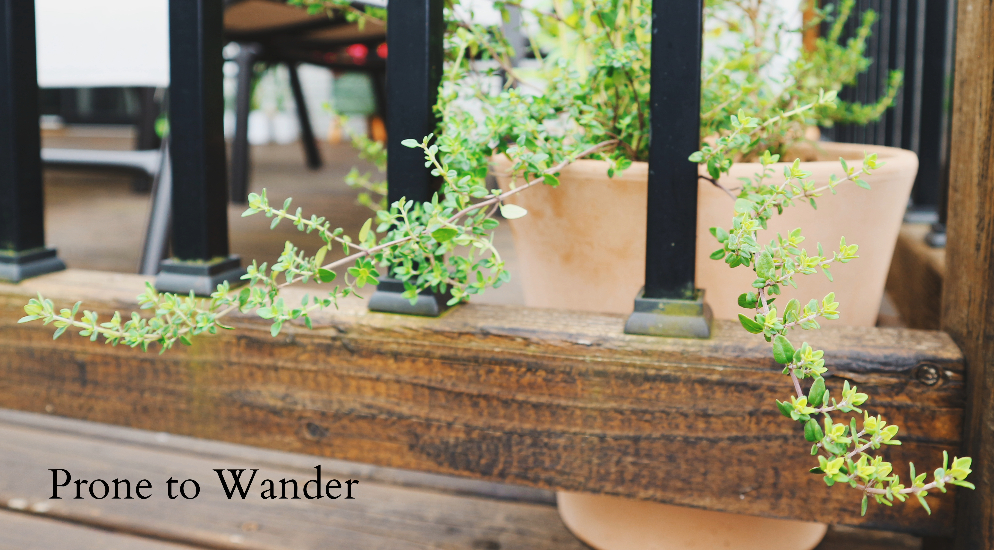When I make soup, I start with what are called the aromatics, which are the vegetables and herbs that give the dish its flavor base. I usually start with celery, onion, carrot, garlic with thyme and bay leaves for poultry or pork soups. If I'm making a cream soup like potato or broccoli, I usually leave out the carrots.
The garlic is pressed right into the soup pot with a garlic press and I rub the dried thyme in my hands before sprinkling it onto the vegetables. I add the bay leaves later with the broth.
Once I have all my vegetables sliced and diced, I put some tablespoons of fat into the bottom of my soup pot (often called a Dutch oven).
(I'll explain a little bit more about starting with fat. Anytime I cook a meat like a ham, bacon or chicken, I save the fat unless I need it to make gravy which I explain in
this post.
Using a rubber spatula, I scrape my roasting pan or dish to remove the fat drippings into a container that I store in the refrigerator or freezer. In the picture below, you can see a piece of chicken thigh leftover from a previous meal. Next to that is a small amount of fat that I had saved. It's only about two tablespoons likely, but it will be enough to help the aromatics begin to cook and release some of their good flavors.)
If I have no fat leftover, I add two tablespoons of olive oil to my soup pot and then add the aromatics to a medium heat soup pot. Or I cook the meat in the soup pot (like bacon or sausage) and then remove the meat, but leave the fat.
In the next photo, you can see some gelatinous ham broth and white ham fat I had saved from roasting a large ham. I added water to the roasting pan and then saved the ham juices and fat for a later meal of ham and bean soup or sausage soup.
Once, my fat is warmed and starting to sizzle in the pot, I add all the vegetable aromatics and stir well to keep them from sticking to the pot. I use my garlic press to add the minced garlic and make sure it is mixed in well.
Let the aromatics soften and stir occasionally. If you're making broth from bullion, fill your kettle with water and when it's done boiling, the vegetables will have cooked long enough on their own. The onions and celery will begin to look shiny which means you're ready to add your broth.
So after about five minutes of cooking, you can add 2-4 cups of broth made from bullion or leftover roasting juices. (When I scrape a dish or pan, some of the drippings are just flavorful juice which separates from the fat. If you refrigerate this, the juices will be come a jelly like the ham broth I showed you and the fat will become white or buttery when it solidifies as you saw with the ham. The strange jelly on the plate are the leftover juices or drippings. I didn't strain the drippings so they have some roasting bits which will blend into the soup. This OXO brand by Knorr is the type of bullion I use for making broth for soup and gravy.
Then add the bullion broth and any leftover broth or chicken gravy you may have leftover. Toss in your bay leaves, stir and let is simmer on low.
While that is simmering, I prep any cooked meat by chopping or shredding it into small pieces. If you're adding any frozen vegetables, you can add them now. I added corn and frozen yellow beans. Then I added some salt and pepper, stirred again and put the lid on and turned the soup to low. Because I'm serving this soup in a bowl over hot rice, I will cook the rice separately in my rice cooker. Rice is very absorbent so I will only combine it with my soup once we are ready to plate the food and sit down at the table.
If you want the soup to be creamy or thick, you can use an immersion stick blender right in the pot(it will scratch the bottom if it touches, but I don't care about my pot) to blend the soup together. Start by using it in one or two spots and see what you think of the consistency. Blend more if you like. If you're adding milk or cream, you can do that after all the vegetables are cooked. Keep the soup on a low heat and just heat until it's steaming, stirring frequently.
Soup leftovers can be kept for other meals in the refrigerator for a week or more and longer in the freezer. It is a good one pot dish for entertaining or to take for a potluck meal or give to someone else who needs meals. It can also be made a head of time and often tastes better the next day or later.
Here's the basic formula for any soup, stew, or chowder:
fat + aromatics + broth + seasonings + additional vegetables + meat (optional) + milk/cream (optional) = meal
Here are some other soups that I have made this past fall and winter: sausage and potato, ham and potato.










No comments:
Post a Comment
I enjoy reading your comments and try to reply as much as I can. Thanks for reading here.